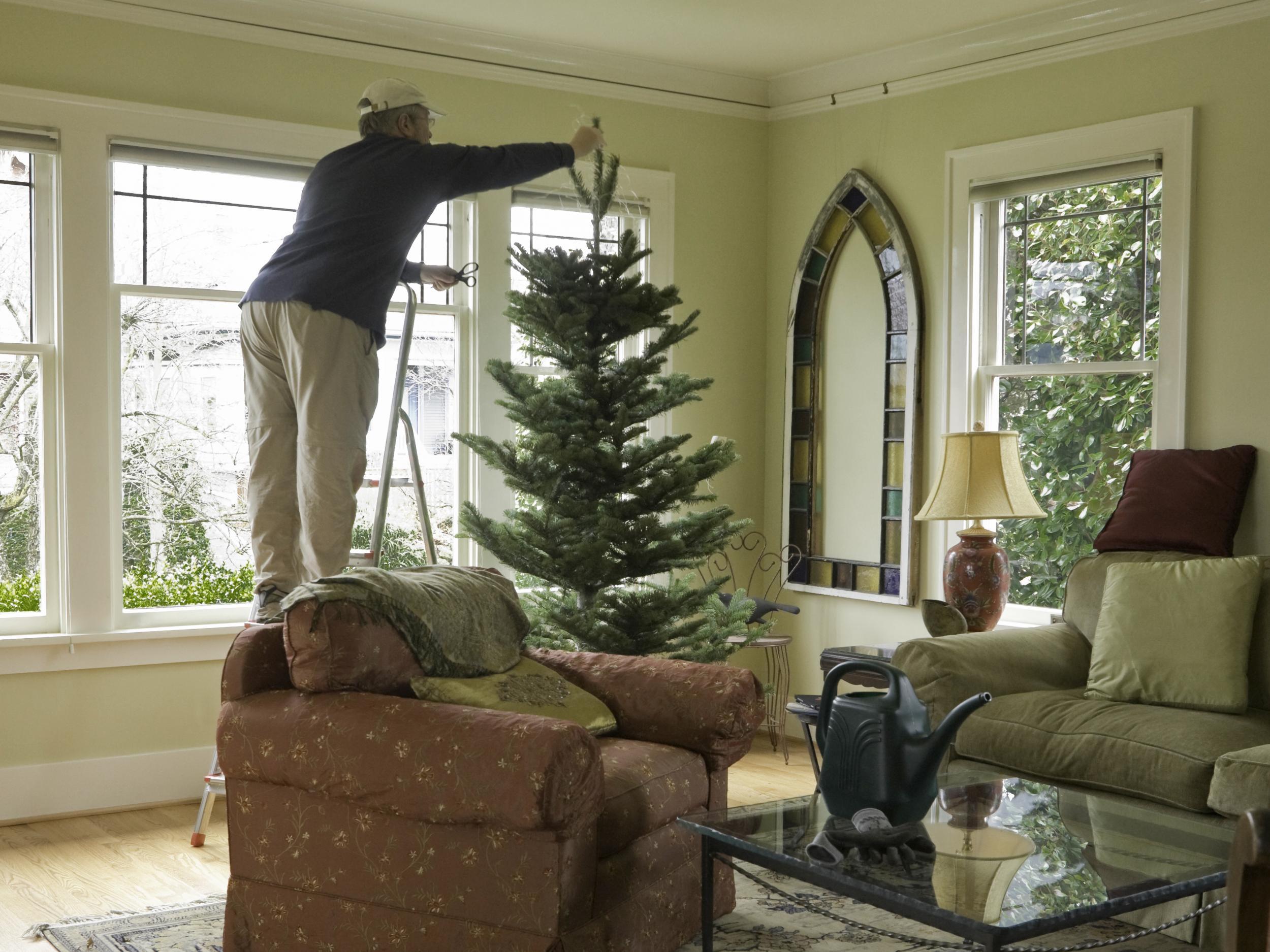The Christmas injuries you're most likely to get
To avoid getting a Darwin Award this Christmas, don’t do what these people did

Your support helps us to tell the story
From reproductive rights to climate change to Big Tech, The Independent is on the ground when the story is developing. Whether it's investigating the financials of Elon Musk's pro-Trump PAC or producing our latest documentary, 'The A Word', which shines a light on the American women fighting for reproductive rights, we know how important it is to parse out the facts from the messaging.
At such a critical moment in US history, we need reporters on the ground. Your donation allows us to keep sending journalists to speak to both sides of the story.
The Independent is trusted by Americans across the entire political spectrum. And unlike many other quality news outlets, we choose not to lock Americans out of our reporting and analysis with paywalls. We believe quality journalism should be available to everyone, paid for by those who can afford it.
Your support makes all the difference.The festive period is a time for family, friends and happiness. The worst thing most people face is a bit of digestive discomfort from overeating. But for a few unfortunate individuals, Christmas is like a scene from National Lampoon’s Christmas Vacation. To avoid having a Christmas like the Griswolds, try and learn some lessons from these unfortunate folk.
Most people illuminate their Christmas tree with electric lights, but people in some countries, like Switzerland, still prefer to use candles. Between 1971 and 2012, 28 Swiss people sustained significant burns from doing this, and four died as a result of their burns. Although less common than household fires, fires associated with candles and Christmas decorations usually lead to much more severe injuries.
However, Christmas lights aren’t much safer. A study from Canada found that people who injured themselves installing Christmas lights spent an average of 15 days in hospital and, sadly, five per cent of those injured died. Christmas lights are particularly hazardous to children as they are the perfect size for them to eat or inhale.
Although festive baubles usually cause hazards in the home, they have been known to cause problems in health centres and hospitals. Shortly after the festive decorations went up at a hospital in Copenhagen, Denmark, a technologist was summoned to investigate a “broken” blood gas analyser. The technologist removed tinsel that had been draped over the machine and, voila, it worked once again.
Festivities out of the house also increase the chance of being injured. A recent study in the UK showed that assaults resulting in facial injuries, likely inflicted while out cerebrating the season of goodwill, increase significantly over the Christmas period, compared with the rest of the year and with other holiday periods.
Christmas hazards don’t respect borders
Sadly, good weather doesn’t guarantee safety. An Australian study showed that over a Christmas and New Year period, a number of people were admitted to a major trauma centre as a result of injuries from jet-skis and boat propellers.
Meanwhile, on the other side of the ocean, Americans are busy injuring themselves, too. According to the United States Consumer Product Safety Commission, there were 407 Christmas-related admissions to health centres and emergency departments in December 2016. Surprisingly, more than half of those admitted were women.
Of the 407 admissions, 84 were caused by Christmas lights, 40 were caused by Christmas trees and/or their supports, and 159 were caused by Christmas decorations. The remainder were from a variety of causes.
The data shows that ten per cent of those admitted were younger than two years. In fact, children aged ten and under accounted for a quarter of all admissions. The next largest admitted group, divided into ten-year age groups, were those aged 51-60 with 16 per cent, followed closely by those aged three to ten with 15 per cent.
The most common injuries were cuts (18 per cent), ingestion or inhalation of foreign objects (15 per cent), sprains and strains (15 per cent) and scratches (14 per cent).
Some of the more notable cases in the list of admissions were as follows:
- A 36-year-old man was putting up Christmas decorations when he looked up and sneezed, accidentally swallowing a drawing pin in the process.
- A four-year-old girl was found with a metal bell in her ear. She told the medic that she wanted to “hear jingle bells”.
- A 50-year-old woman who had been standing on a chair hanging Christmas lights fell and struck her rectum on the tree branches. She was diagnosed with a tear alongside her rectum.
- A 28-year-old woman was putting up an ornament when the bar stool slipped from under her, causing vaginal trauma from the landing.
- A 66-year-old man was working at home to put up Christmas decorations when the wind blew him around and around, making him dizzy.
- A 64-year-old woman dropped a four-foot wooden Santa on her foot, spraining it.
As you prepare for the festive period, remember that the potential for accidents is all around, so take your time putting things up and don’t over do it. It’s all about elf and safety. You don’t want to end up like the Christmas turkey: burned, sliced, dislocated and with a foreign object inside you.
Merry Christmas!
Adam Taylor is a director of the clinical anatomy learning centre and senior lecturer in anatomy at Lancaster University. This article first appeared on The Conversation (theconversation.com)
Join our commenting forum
Join thought-provoking conversations, follow other Independent readers and see their replies
Comments